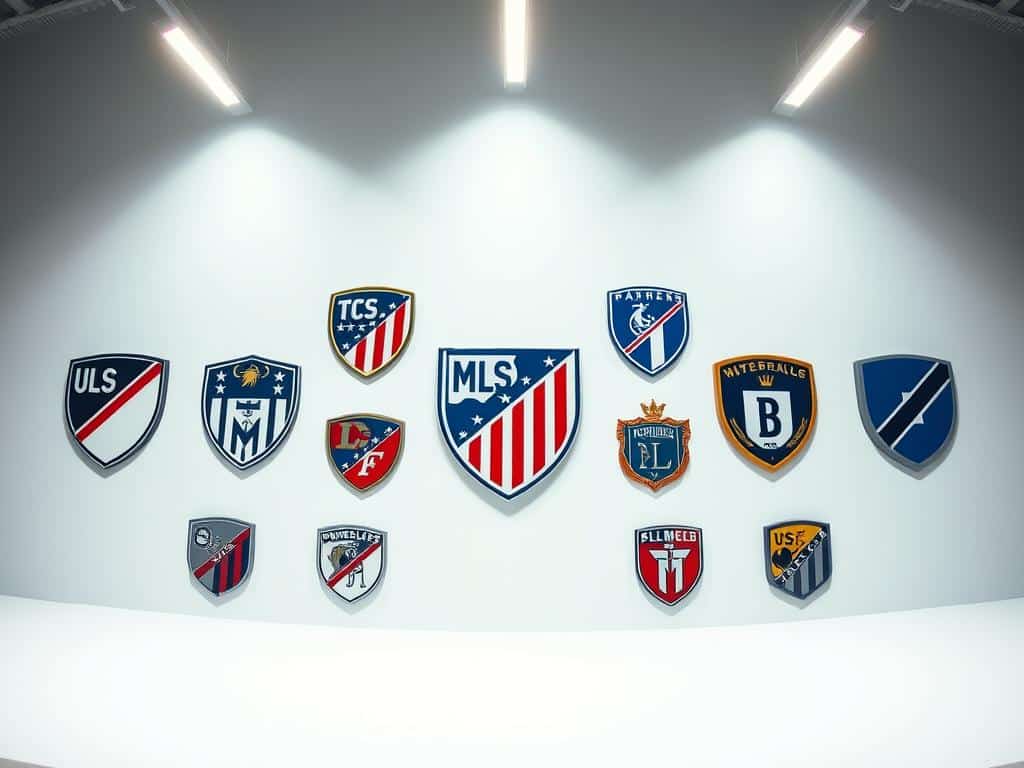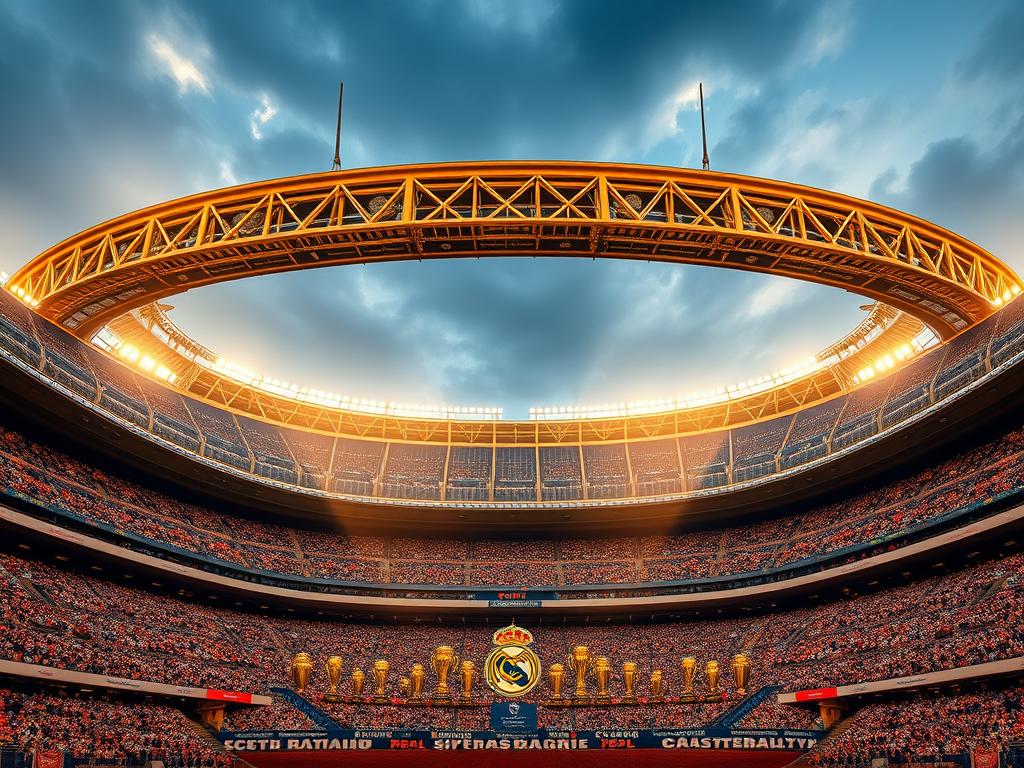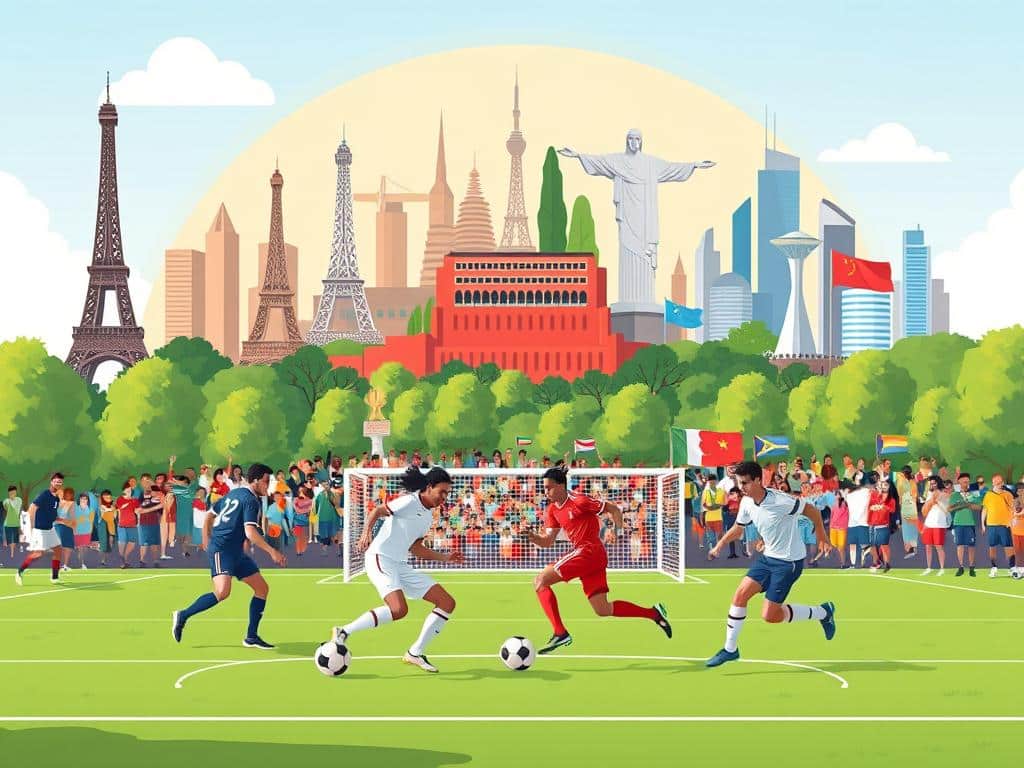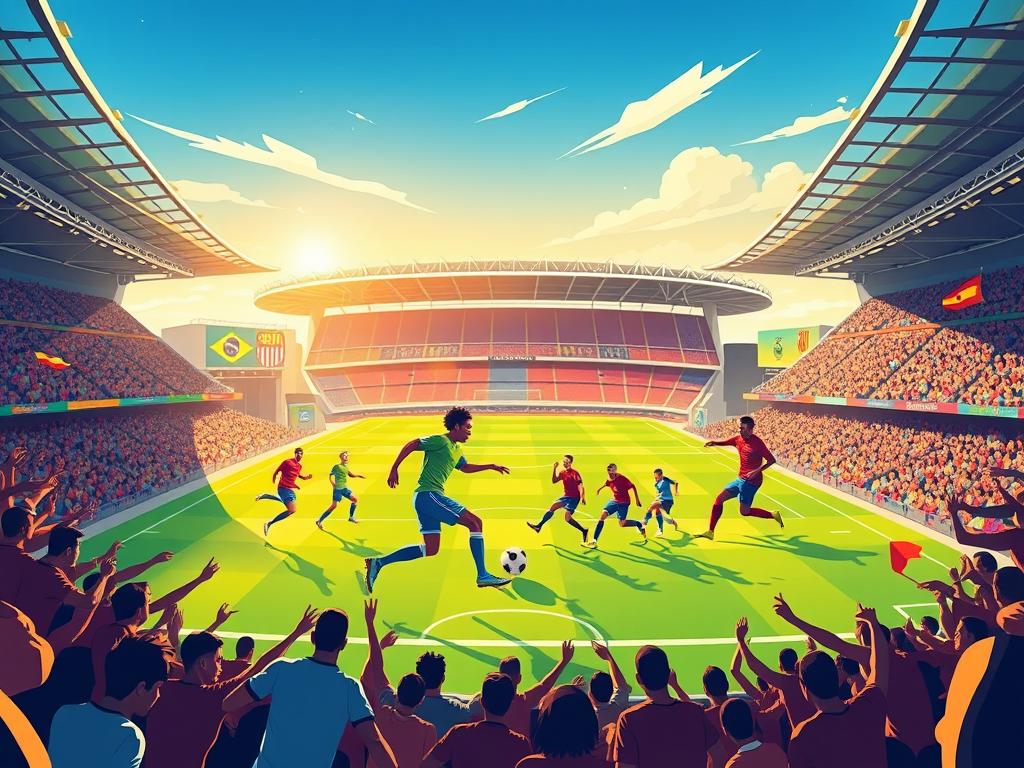Ever wondered how Spanish football became a global sensation? LaLiga, born in 1929 as the Campeonato Nacional de Liga de Primera División, started with just 10 teams. Today, it’s a powerhouse, blending fierce rivalries like Barcelona vs. Real Madrid with unmatched passion.
Back in the early 1900s, amateur tournaments in Catalonia set the stage. Clubs like Real Madrid, Barcelona, and Athletic Bilbao became founding pillars—none have ever been relegated. The league’s growth wasn’t smooth, though. The Spanish Civil War paused play, reshaping its future.
Beyond the pitch, LaLiga fuels Spain’s culture and economy, contributing 1.44% to GDP. Want to dive deeper? Check out the top historic soccer rivalries that defined the game.
The Birth of LaLiga: Tracing the History of LaLiga Region
Before LaLiga became a household name, Spanish football thrived in regional amateur competitions. The early 1900s saw clubs like Barcelona and Athletic Bilbao dominate the Catalan Championship. These local rivalries laid the groundwork for a national league.
From Amateur Leagues to Professional Football
By the 1920s, the push for a unified league grew louder. José María Acha, a key figure, proposed a national competition. The debate split clubs: Minimalistas wanted only champions, while Maximalistas favored including historic teams.
The Founding of LaLiga and Its Original 10 Teams
In 1929, LaLiga kicked off with 10 clubs—six Copa del Rey winners, three runners-up, and Racing de Santander via playoff. Founding members included giants like Real Madrid and Barcelona, plus underdogs like Real Unión. These teams still shape Spanish football today.
Early Challenges and the Spanish Civil War’s Impact
The league’s progress halted in 1936 when civil war erupted. The 1936–37 season was canceled, and clubs faced rebuilding. Yet, this turmoil forged resilience, setting the stage for LaLiga’s later dominance in European football.
The Evolution of LaLiga’s Structure and Competition
LaLiga’s structure has transformed dramatically since its early days. What began as a 10-team league now boasts a multi-tiered division system, thrilling promotions, and a points system that rewards bold play. Let’s break down how it all works.
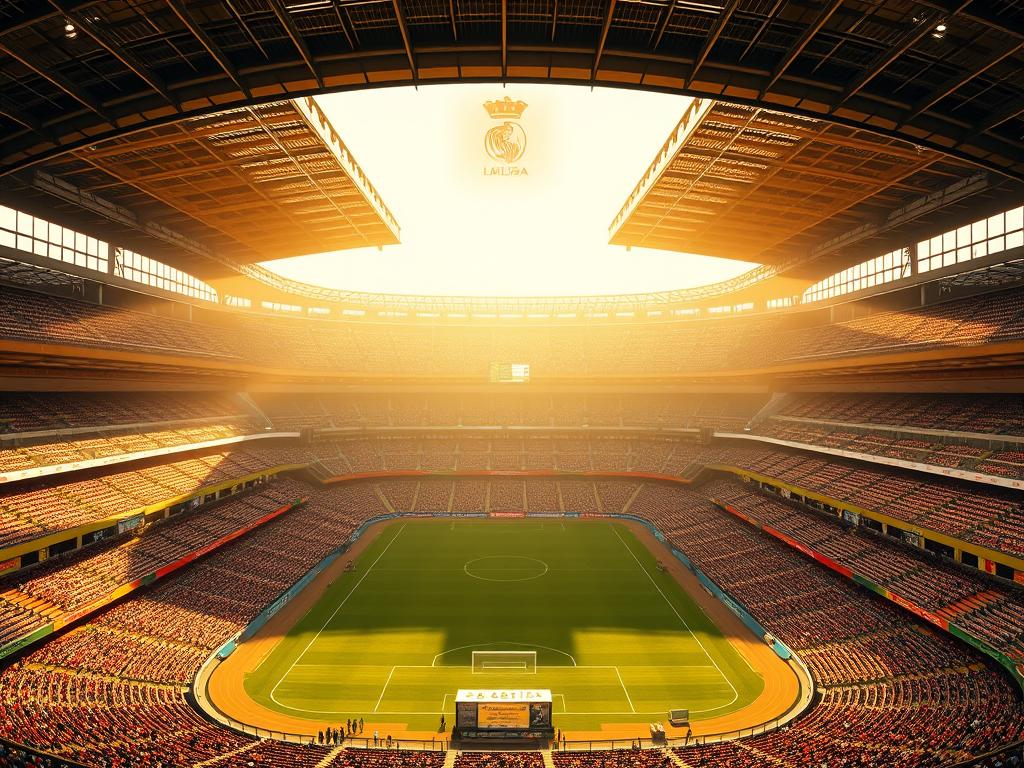
Expansion of Divisions: Primera, Segunda, and Beyond
By 1977, LaLiga introduced Segunda División B, replacing the older Tercera División. This added depth to Spain’s football pyramid. Today, teams climb from regional leagues to the top tier, dreaming of Primera División glory.
The league briefly experimented with 22 teams in the 1990s but settled on 20 by 1987. This balance ensures fierce competition without diluting quality.
Promotion, Relegation, and the Points System
Three teams drop to Segunda each year, while rising stars battle playoffs for promotion. Since 1995, wins earn 3 points—a game-changer that encourages attacking play.
Fans love the drama. A single goal can save a season or doom a club to relegation. It’s why LaLiga’s system keeps millions glued to screens.
Key Milestones: From 20 Teams to European Dominance
LaLiga’s teams didn’t just dominate Spain—they conquered Europe. Real Madrid and Barcelona alone won 7 FIFA Club World Cups. Top-four finishers qualify for the Champions League, fueling Spain’s European dominance.
Behind the scenes, smart finances boosted the league. Commercial deals and player sales helped LaLiga contribute €8.3B annually to Spain’s economy. Now that’s a winning system.
Dominance of Giants: Real Madrid, Barcelona, and Beyond
Few rivalries in football ignite passion like the battles between LaLiga’s legendary clubs. For decades, Real Madrid and Barcelona have set the standard, while others like Atlético Madrid and Athletic Bilbao carved their own legacies. Let’s dive into the stories behind these titans.
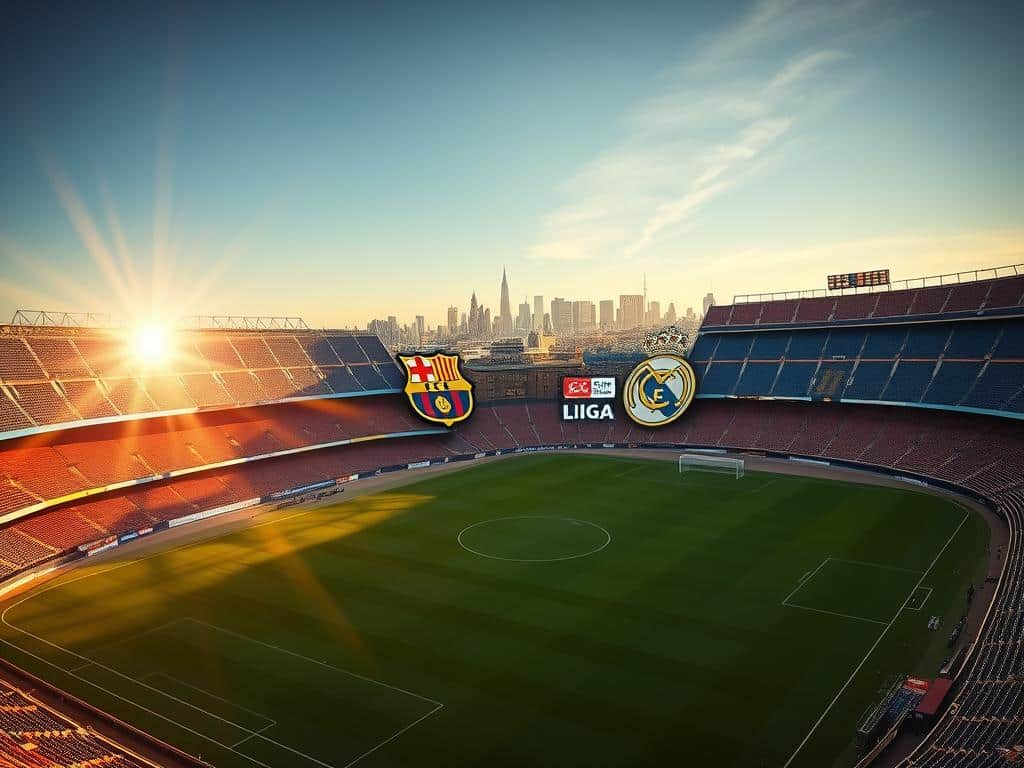
Real Madrid’s Record 36 Titles and European Success
No club dominates like Real Madrid. With 36 titles and 14 Champions League trophies, they’re football royalty. Legends like Alfredo Di Stéfano and Cristiano Ronaldo turned the Bernabéu into a fortress.
Ronaldo’s 311 goals in white? Unmatched. Their 81,044-seat stadium echoes with history—every corner whispers of glory.
Barcelona’s Legacy: Messi, Cruyff, and La Masia
Barcelona’s magic lies in La Masia. This academy birthed Lionel Messi, whose 474 goals redefined greatness. Johan Cruyff’s “tiki-taka” style? Pure artistry.
Camp Nou, Europe’s largest stadium (99,354 seats), hosts dreams. Six Ballon d’Or awards later, Messi’s shadow still looms large.
Atlético Madrid and Athletic Bilbao’s Historic Contributions
Atlético Madrid thrives on grit. Diego Simeone’s tactical genius earned them 10 titles. Their red-and-white stripes? A symbol of resilience.
Athletic Bilbao stands alone. Since 1912, they’ve fielded only Basque players. Eight titles prove local talent can shine globally.
LaLiga’s Cultural and Economic Impact on Spain
Spanish football isn’t just a sport—it’s a cultural force shaping the nation. From packed stadiums to viral TikTok highlights, LaLiga fuels passions and paychecks alike. Let’s explore how clubs like Real Madrid and Barcelona move billions while uniting fans worldwide.
El Clásico: More Than a Football Rivalry
When El Clásico kicks off, Spain holds its breath. This clash between Real Madrid and Barcelona splits households, sparks debates, and even mirrors political divides. With 97 vs. 96 wins, it’s a rivalry etched into the spanish football DNA.
Beyond goals, it’s a cultural spectacle. Cafés pause business. Streets empty. The world watches—650M viewers tuned in for the 2023 match. For 90 minutes, football becomes Spain’s universal language.
Financial Powerhouse: GDP Contribution and Global Reach
LaLiga isn’t just goals—it’s jobs. The league contributes 1.44% to Spain’s GDP, funding schools and hospitals through €8.3B in annual taxes. Here’s how the money flows:
- 194,000 jobs rely on matchdays, merch, and tourism.
- Camp Nou draws 1.5M visitors yearly, boosting local shops.
- TV deals in 180+ countries expand Spain’s global reach.
LaLiga’s Role in Spanish Identity and International Fandom
Walk into any bar in Madrid or Mumbai, and you’ll spot LaLiga jerseys. The clubs are global brands: Real Madrid and Barcelona boast 300M+ social media followers combined.
Young fans mimic Messi’s dribbles. Tourists flock to stadium tours. Streaming apps unite international fandom across time zones. LaLiga isn’t just Spain’s pride—it’s the world’s shared obsession.
LaLiga’s Enduring Legacy in Global Football
From humble beginnings to global dominance, LaLiga’s legacy in football is unmatched. For a century, its clubs like Real Madrid and Barcelona have set benchmarks with 65 combined titles and iconic players.
Youth academies and rivalries fuel its success. Rising stars like Gavi and Vinícius Jr. now chase the goals of legends. Every stadium, from San Mamés to Mestalla, pulses with stories.
LaLiga isn’t just a league—it’s a world phenomenon. Plan your pilgrimage and witness how football shapes culture. Dive deeper into soccer’s global impact.


